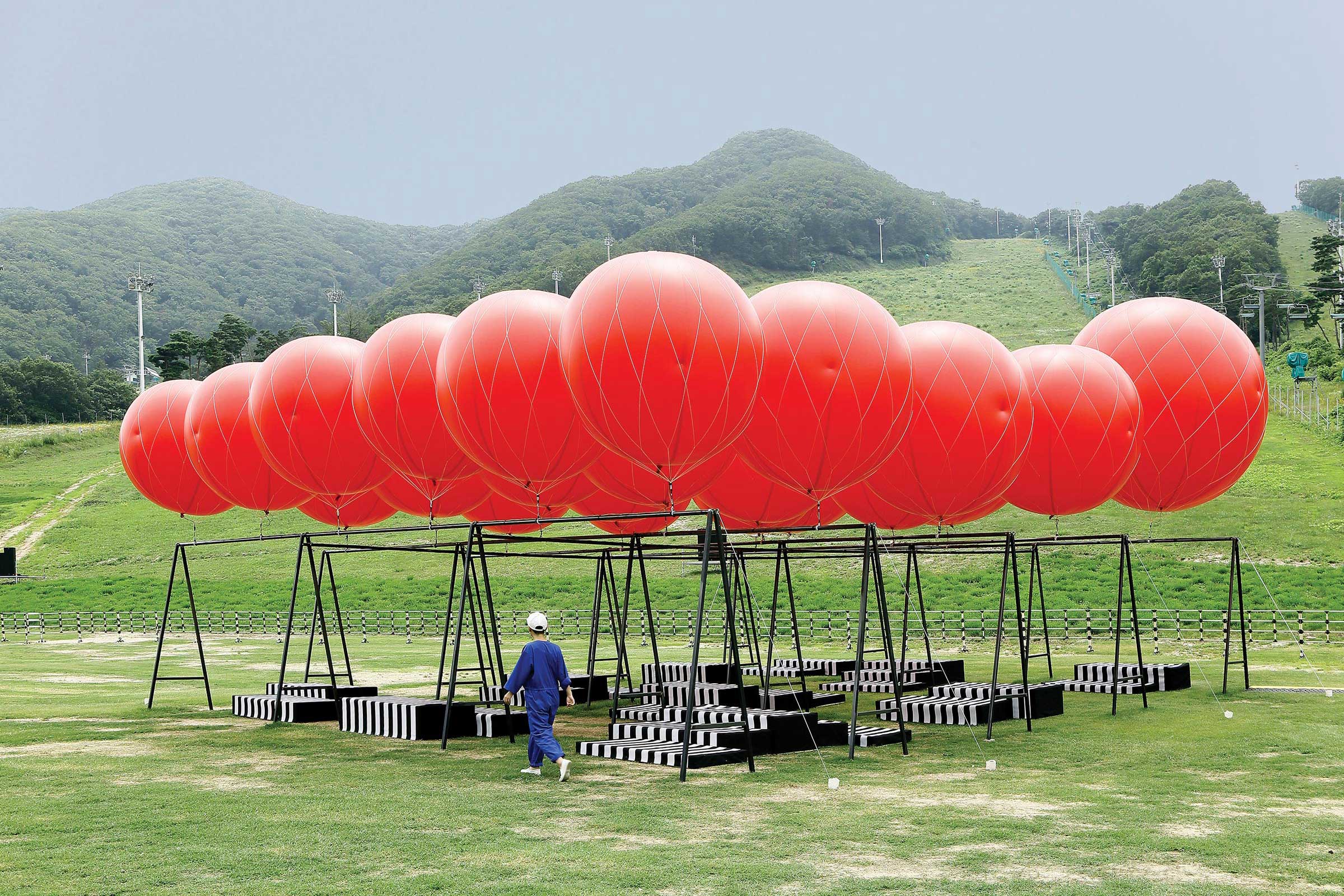Right now, things are hectic,” graphic designer Na Kim tells us from her current home/studio in Stuttgart, Germany. Frankly we’d be surprised to hear things weren’t, considering the breadth of her work and the places it takes her. Na currently spends around half the year in Germany; the rest is spent traveling across the globe—she’s worked on store design in Brooklyn, an exhibition in Portland, various European projects, and is currently tackling a solo show in her birthplace, South Korea.
Na was born in Gwangju, lived in the Netherlands from 2006 to 2012 (both to get her MA at Werkplaats Typografie and to work), then lived in Seoul before she finally moved to Germany in 2018. Her forthcoming Museum of Seoul show is both something of a homecoming and a significant conclusion to her ongoing project, SET. Since 2015 SET has iterated through installations in the US and Korea in numerous formats: colorful, patterned graphic design; a book brought to life through gallery wall coverings and physical interventions; floor-based pieces; and more. Each version is united by the same principles regardless of creation date, medium, or context: The works are solely ordered according to their visual components, like shape or color. Seoul will be SET’s most ambitious format yet: a children’s playground. “It’s exciting to do something I’ve never done before, in a proper show at a large scale,” Na says.
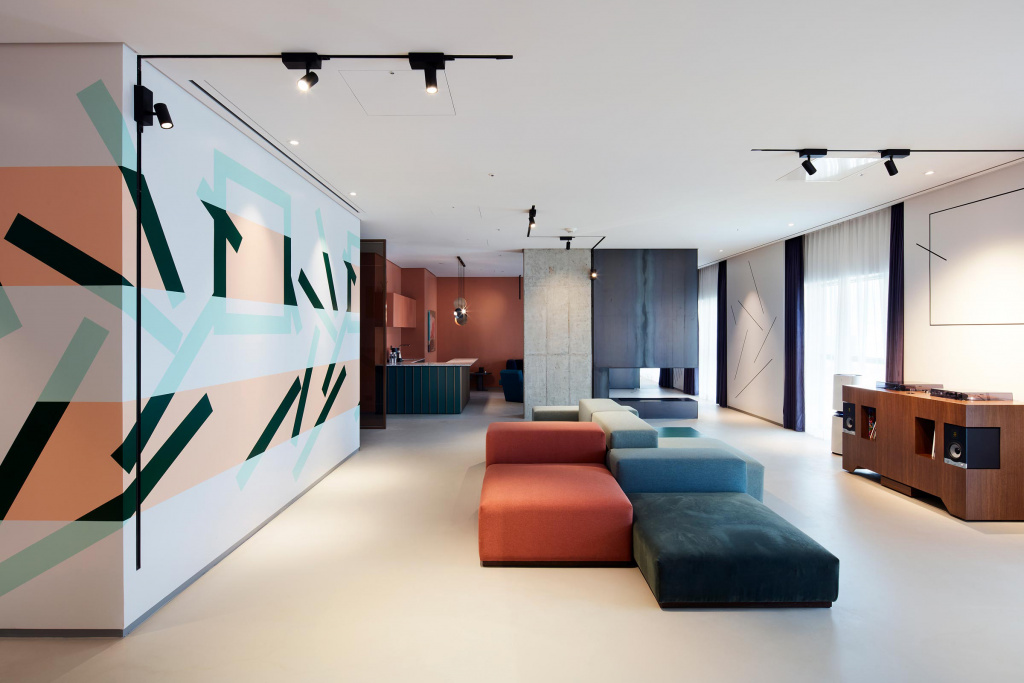
“SET v.11: line to plane” for RYSE Hotel in Hongdae, Seoul, 2018. Na created the pattern on the wall using paint and washi adhesive tapes. Photo courtesy of Na Kim
SET is an example of Na’s broader creative approach, which disregards discipline-based limitations and moves graphic design beyond two dimensions or print into conceptually driven ideas. Whatever medium Na works in, her adherence to certain self-imposed rules and a less-is-more policy makes her work consistently bold, impactful, and joyfully original.
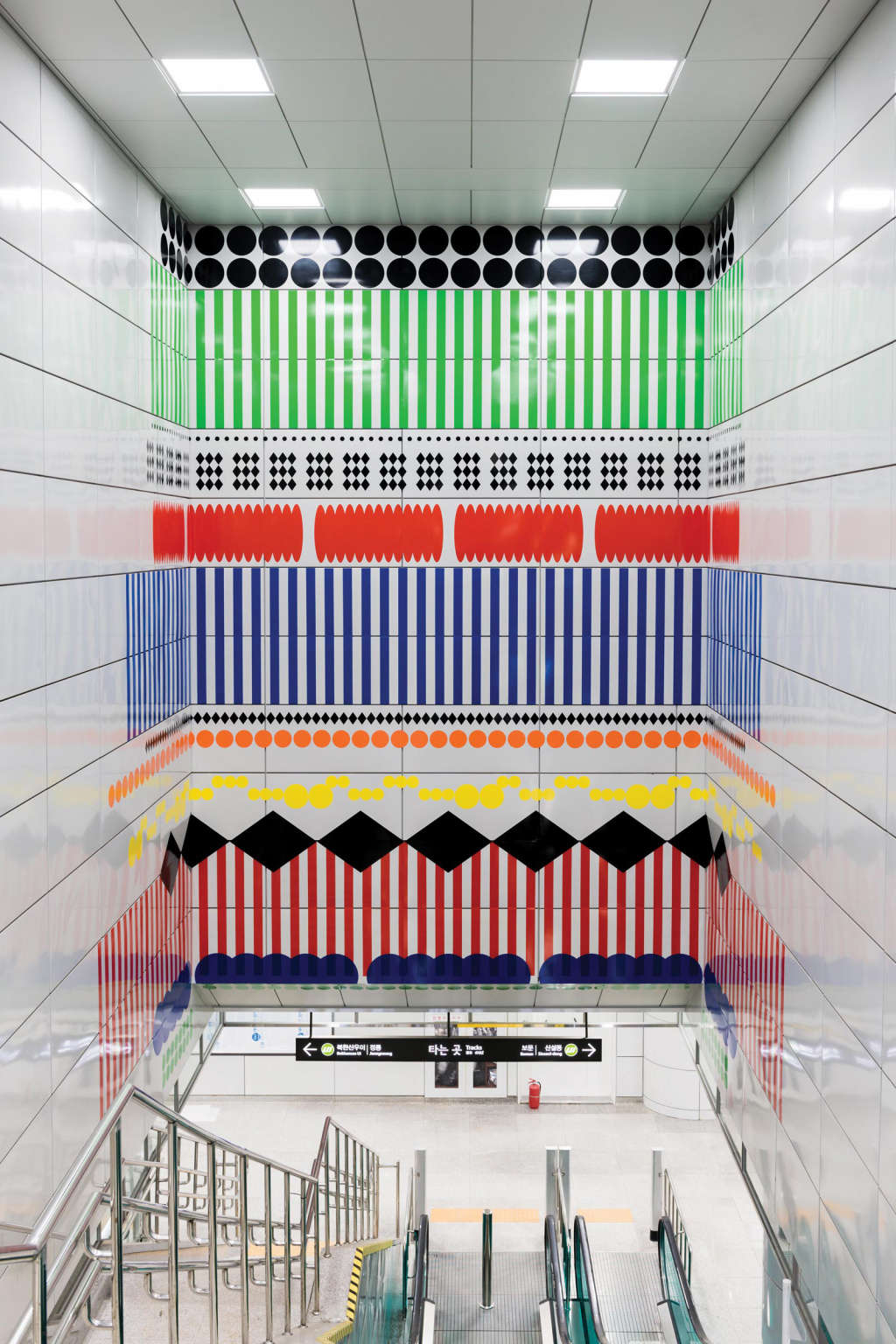
“SET v.9: patterns,” 2017, incorporates adhesive vinyl on a wall with a digital print on a lighting panel for the Seoul Art Station. Photo by Kim Jinsol
Did your upbringing encourage creativity?
I made a lot of small paintings when I was young. I wanted to be an artist and my parents were very supportive in certain ways. But when it came to choosing to go to a science or art high school, like typical Korean parents, they said I should maybe do art later or as a hobby. I studied product design at KAIST University [South Korea]. Back then I didn’t know what design was. It didn’t matter if it was graphic, product, or industrial—just being able to create something was most important. After a while I realized I was more interested in making visual forms than three-dimensional objects. I thought maybe graphic design needed more sensibility and understanding behind it, as a basic step for communication, engagement, or collaboration with other fields. Product design felt very market-oriented.
How helpful are labels like “graphic designer” and “artist?”
I like to define myself as a graphic designer, but I’m just as interested in having the chance to create something I had in my imagination—the medium doesn’t matter. I’m lucky to get good commissions and clients now who give me the chance to do that. To me, the difference is that art is making something that comes from inside you, without limitations. I find that hard. It helps to imagine myself as the client.
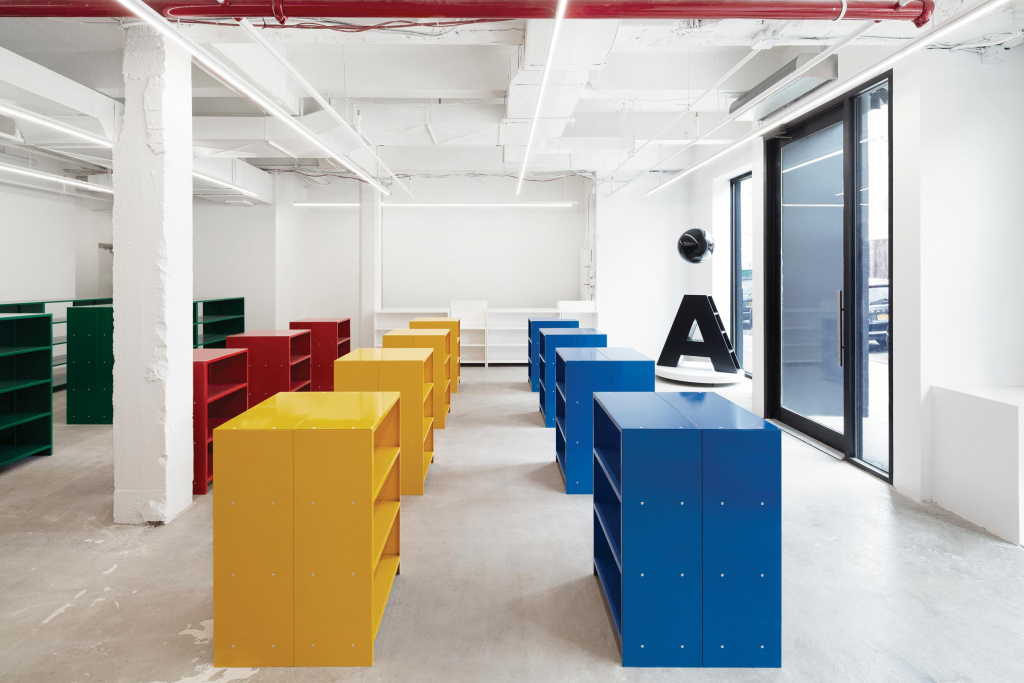
“ÅLAND Brooklyn” (2018) is an example of Na Kim’s space design. Photo by Olympia Shannon
What’s your workspace like?
Since I moved back to Germany last year I work from home, as my place is quite big. My workplace is really important to me; I have so many books and papers and models, I always need to see them beside me. I also need enough space and walls to look at previous work: You always have to plan for the future and look at what you’re doing in the present, but it’s really worth looking at and thinking about what you’ve done before, to remember your passion for it. It’s easy to forget about it, especially these days with everything changing so quickly.
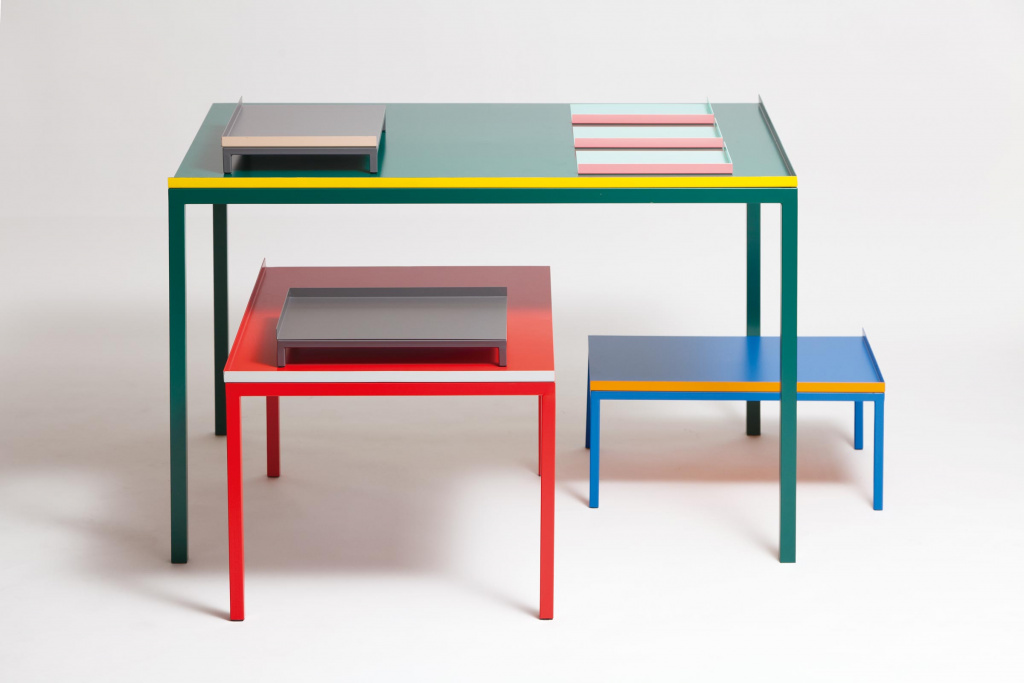
For Table A (2013), Na designed tables to correspond to different sizes of “A” for the National Museum of Modern and Contemporary Art in Korea. Photo by Less
How does your creative process usually start?
It’s hard to explain, but often a project makes me think of some stupid visual image in my head—just something very simple, which might be a starting point or end up as a small part of the final product. It’s a specific attraction that makes the work exciting from that point on. If I don’t get that, I feel nervous, but it does in most cases. Then I build on that through studying the contexts of the project and pulling a lot of different things together from books and my own archive of everyday ephemera—things that have personal meaning. Some of these I’ve designed, others I haven’t. Often all sorts of references start popping up, which can be quite random, and I connect everything together. Then I sketch using a specific sharp pencil—if I can’t find that exact one, I find it hard to write. I like to use things that are familiar to me.
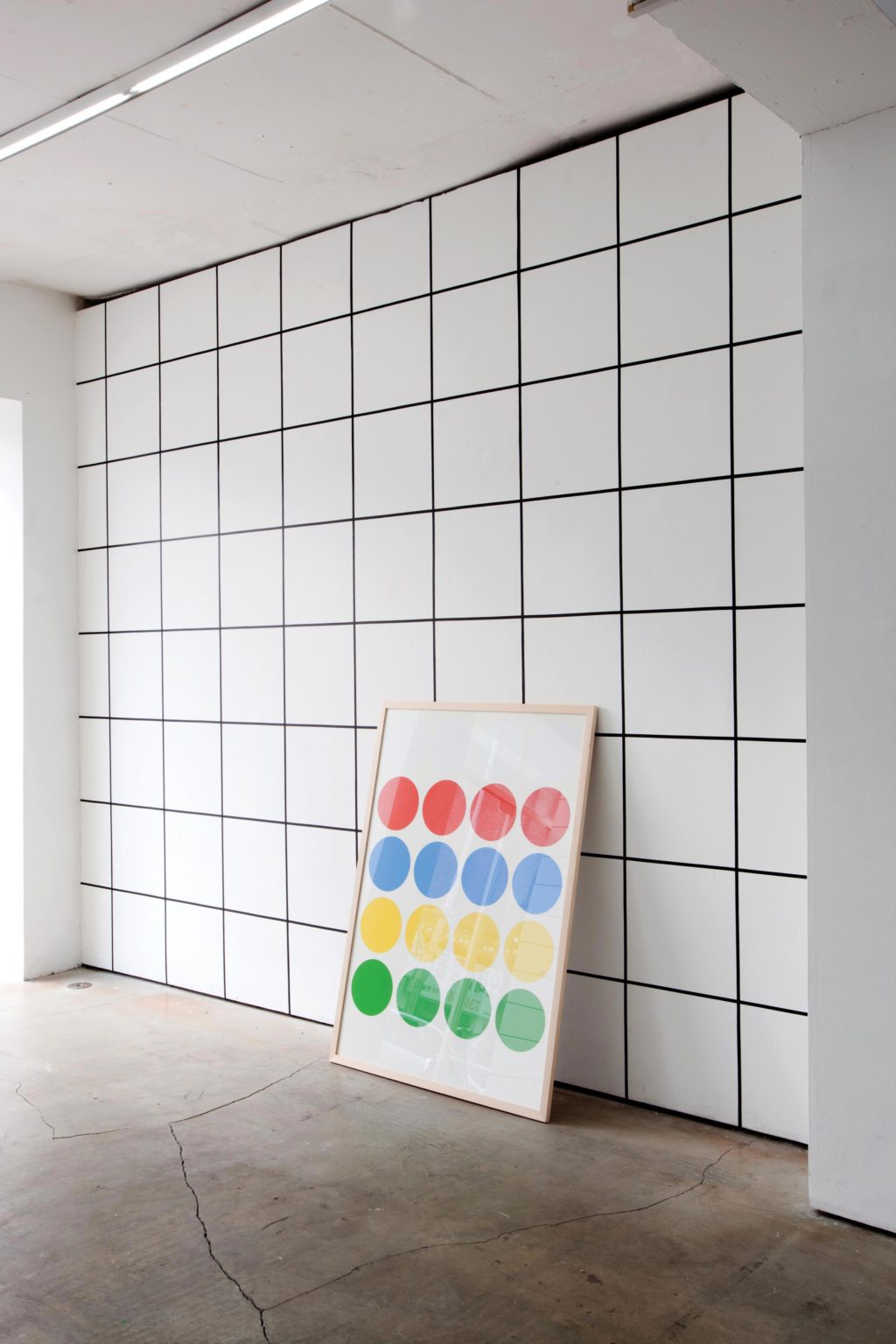
2011 Installation view of “Found Abstracts.” Photo by Park Junghoon
How would you describe your aesthetic?
I like to find one clear system or point that connects many different things so I can make it look minimal or basic, with fundamental colors or shapes. I try to reduce rather than add things. If I’m trying to add more, it means I’m not sure about something. I ask myself questions like, “Is this line really necessary? Should I add this material?” If I can’t explain those clearly, it’s easy to know what to erase.
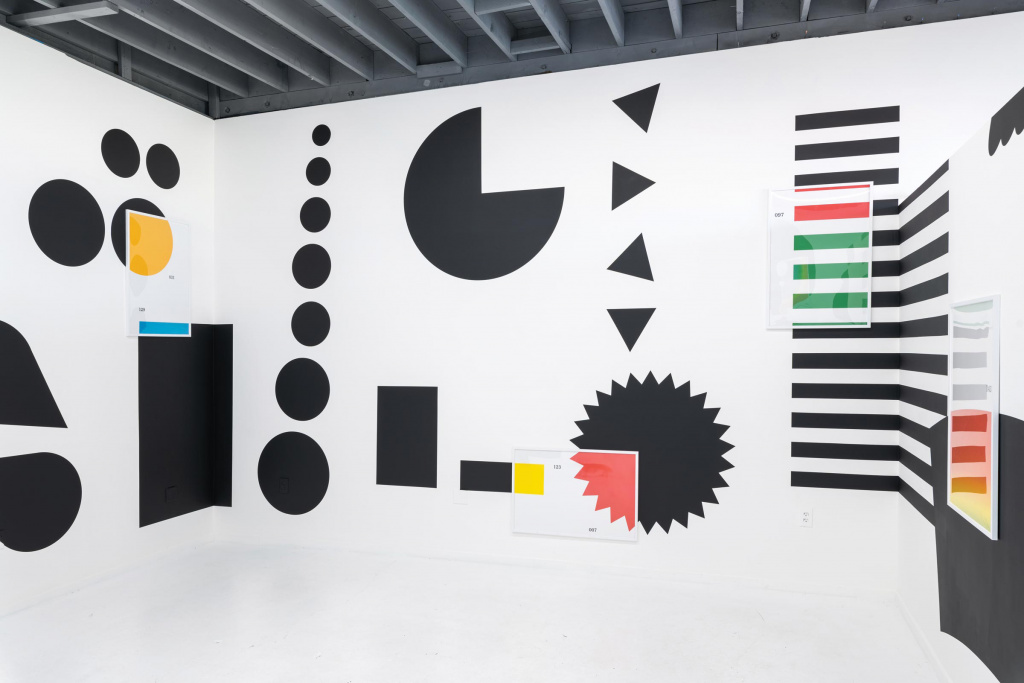
“SET v.16: black and white” (2019) shows originally colored shapes in black and white. The cropped frames reveal their true colors. Photo courtesy of Na Kim
How’s your work/life balance?
When I was in Seoul I definitely worked too much. Compared to working in an agency, as a freelancer I mostly work alone—though I prefer to collaborate with other studios on bigger projects—but I mostly have to manage my schedule myself. That’s lucky in some ways, but not in others. If I have an image come to me in the middle of the night, I need to get out of bed and work on it. I’d be working after dinner, even after going drinking. Now I start work earlier in the morning, go running around 4pm, and try and wrap up by after dinner—and I try not to work weekends. My holidays come in small particles: When I go to a new city on a business trip, I’ll try to add extra time there outside of work. Otherwise I have a break around Christmas to visit family, and that’s it.
[rp4wp]
How much do you feel designers have a responsibility to explore social and political issues?
It’s something I’ve thought about more and more after the #metoo movement. I’ve never personally felt gender discrimination, but for me as a Korean woman maybe the strongest message is to keep doing what I like—not just get married, have kids, and stop working. That can be a stronger message than a clear activist-based project. I decide to devote my time and myself to what I want to do.
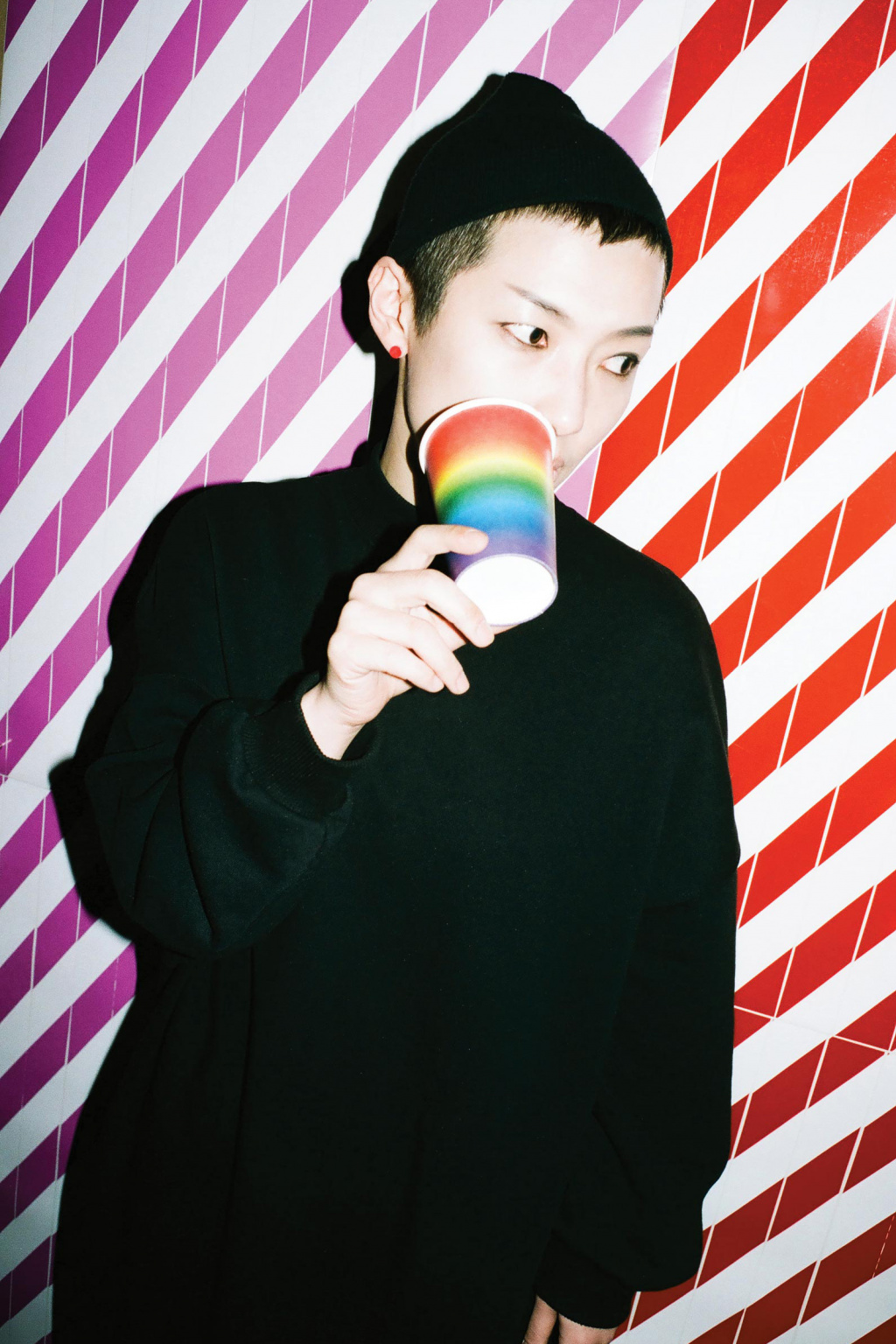
Na Kim’s work has been seen all over the world. Photo by Kim Jinsol
This article originally appeared in the Spring/Summer 2020 issue of Sixtysix with the headline “Na Kim.” Subscribe today.
